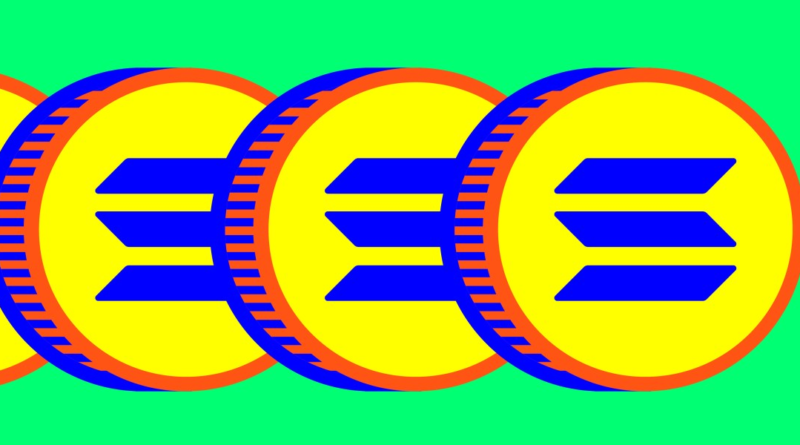Solana’s latest outage incites fresh centralization criticism
Solana, the popular blockchain that’s been hailed as a potential “Ethererum killer,” experienced a five-hour outage on Tuesday. It is the latest in a series of technical glitches that has raised doubt about Solana’s reliability, and questions about how decentralized the network really is.
Solana’s native token, SOL, tumbled from $96.43 to $93.36 during the blip, although it has since recovered that loss, according to CoinGecko data. Meanwhile, transactions on the network ground to a halt.
The outage came after a cluster halted and required a system restart, according to Austin Federa, Head of Strategy, Solana Foundation. The root cause is yet to be identified.
With its high speed and low fees, Solana has become a leading “Layer 1” blockchain competition in recent years, and has been undergoing a recent boom that outpaces the industry’s recent bullish trajectory, climbing over 400% in 2023, and becoming the fifth-biggest token. By comparison, ETH, rose by a modest 66% last year.
The latest hiccup raises questions, however, about whether Solana has the technical foundation to outpace its rival, and if it can achieve the sort of decentralized infrastructure that have made Bitcoin and Ethereum the industry’s leading blockchains.
“People want to have ETH killer — it’s a fun narrative,” said Ernst & Young’s global blockchain leader, Paul Brody. “But I think [the outage] does raise doubts,” he added, hinting that the incident provided an “I-told-you-so” moment for decentralization advocates.
Centralization skeptics
The outage has ripened criticism by those who believe the network’s centralized structure is at odds with crypto’s ultimate promise: control should be distributed amongst a network, rather than an individual, organization or group.
“True blockchain developers who care about decentralization have tended to steer somewhat clear of Solana,” said Brody.
If it’s a software bug that’s been propagated through the network, an outage will arise when there’s a single point of failure, and typically a single entity is responsible for fixing it, he said.
Brody, who has written a book on Ethereum, sees outages as a “real struggle for Solana,” and says Tuesday’s lapse makes the former, which has not experienced similar such problems, look attractive in comparison.
Is this the “ETH Killer”?
Solana down for almost 2 hours 🤣 pic.twitter.com/XMzXSlyygh
— Harry 🔺 (@0xHarryJohnson) February 6, 2024
Laurence Smith, a senior market strategist at blockchain ConsenSys (founded by rival Ethereum’s co-creator Joseph Lubin), acknowledges Solana’s price and speed advantages, but sees the outage as a reminder of centralization’s downsides.
“The centralization risk is that one party controls everything — such as when you turn it on or off,” he told Fortune. For him, the Tuesday underscores his hesitations about the network: “Is it truly in line with decentralization?”
Chronic outages
Network failures have long plagued Solana.
The network underwent a 18-hour blackout in September 2021. The next year, it faced 14 further outages, leading to a total downtime of 4 days 12 hours 21 minutes, according to the company’s uptime tracker, caused by a mixture of congestion and a series of bugs.
During one particularly severe blackout in January last year, the network faced an outage that lasted for over 24 hours, triggering the liquidation of several traders’ SOL tokens.
Solana Labs’ CEO Anatoly Yakovenko was forced to acknowledge the issue at Breakpoint, its annual 2022 conference, saying “I would say this whole last year has been all about reliability for the Solana engineering team. And a lot of that, I think we’ve solved.”
But even after this acknowledgement of fallibility, in April 2023, a two-day blackout was triggered by excessive memory consumption that required a complex restart.
Solana’s resurgence
While SOL may be booming, the outage comes at a delicate time for Solana Labs’ reputation.
That’s because disgraced FTX founder Sam Bankman-Fried, responsible for “one of the biggest financial frauds in American history” was an advocate for Solana, investing in over 55.8 million SOL tokens, valued at $5.3 billion as of Tuesday, and built a decentralized exchange on the blockchain called Serum, which was partially to thank for the SOL spike of 2021.
Bankman-Fried’s subsequent downfall in November 2022 hit Solana particularly hard, making investors reluctant to back a blockchain that he had so vocally endorsed. During the FTX debacle, SOL’s value fell to just $9.60 by the end of 2022, falling from its all-time high of $259.24 in 2021.
Reflecting on watching SOL tumble and the industry lose trust in the network, Yakovenko told Cointelegraph last year: “I was more worried about the ecosystem of startups; we didn’t know how exposed teams were.”



